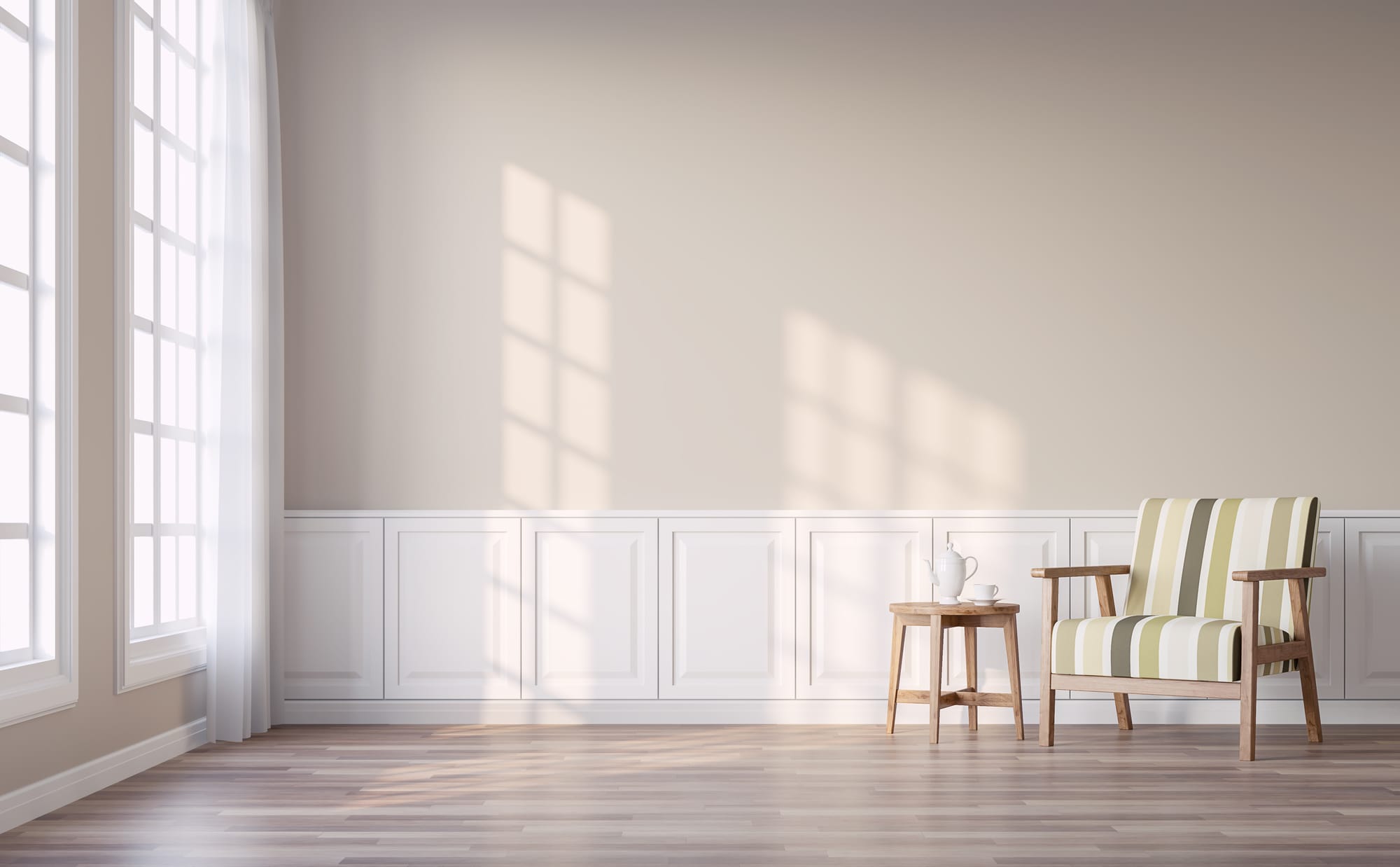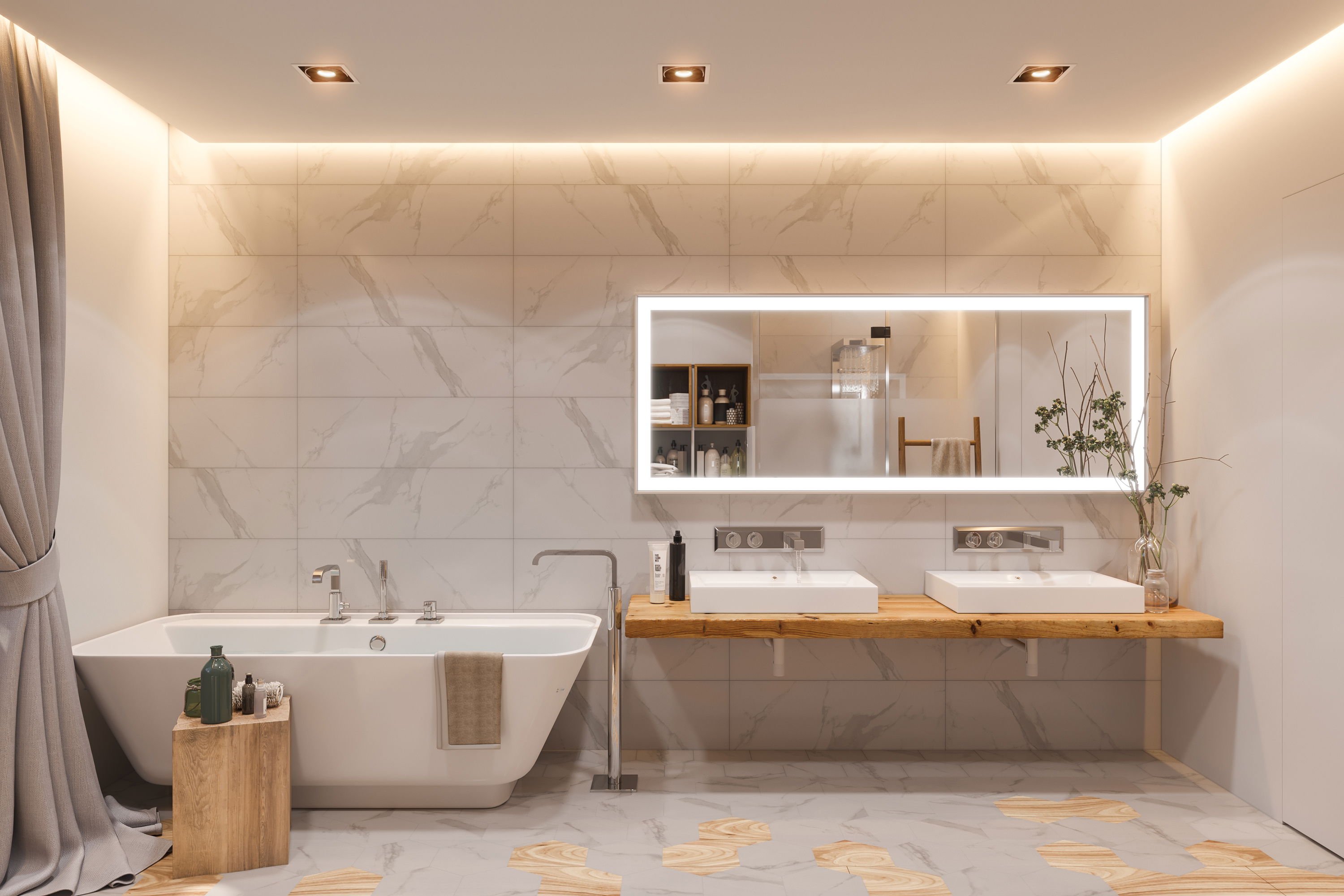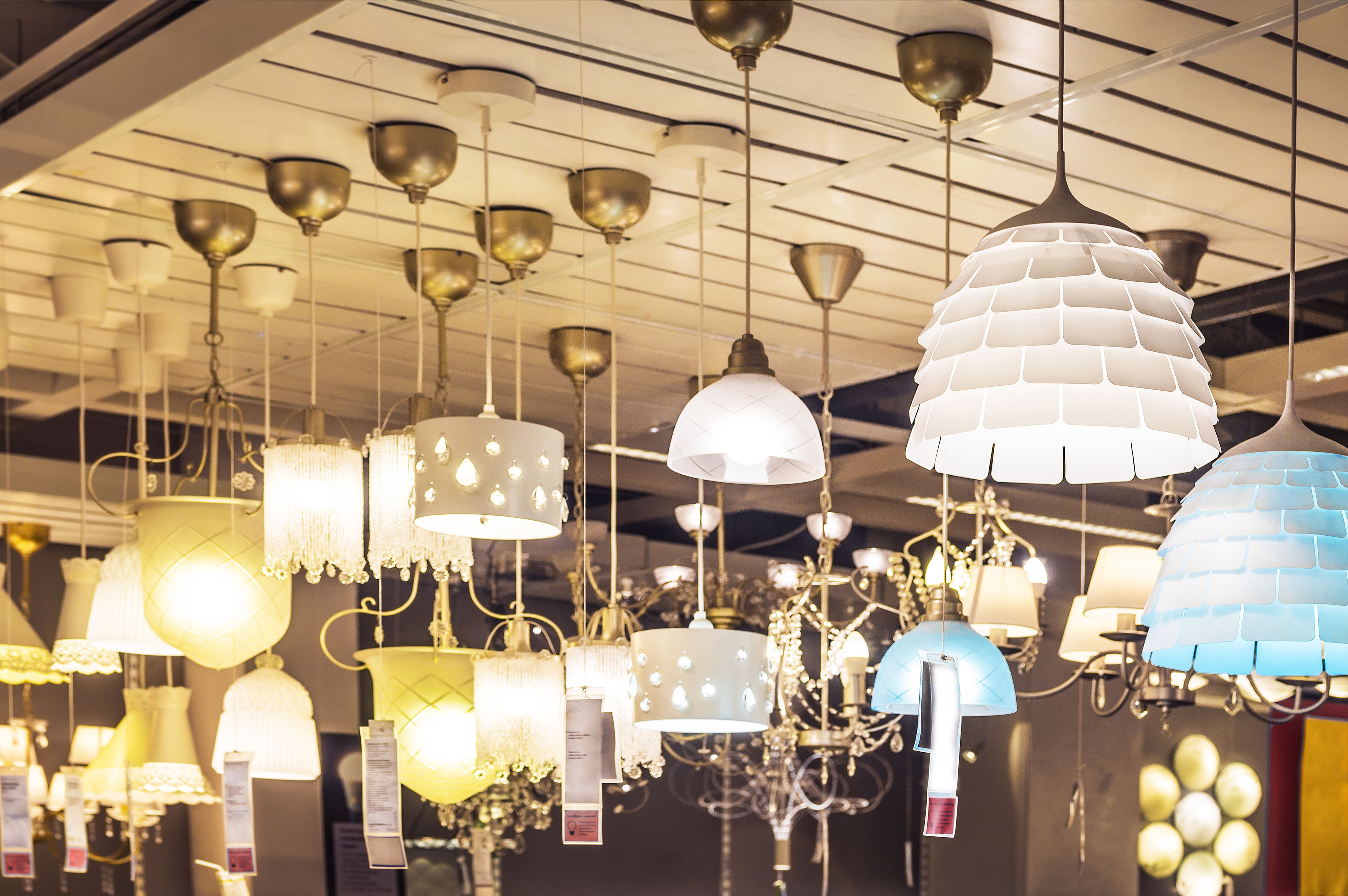The Impact of Light on Paint Colors: A Comprehensive Guide

Key Highlights:
- Understanding how natural and artificial light affects paint colors.
- Importance of testing paint colors under different lighting conditions.
- Strategies for overcoming common lighting challenges in different rooms.
- Lightmen Painting’s expert approach to ensuring the perfect color selection for every home.
The Impact of Light on Paint Colors
Choosing the right paint color is an art and a science. The interplay between light and color can dramatically transform the look and feel of a space. I remember working on a project where a client chose a beautiful shade of blue for their living room. During the day, the room was bathed in soft natural light, making the color look serene and inviting. However, in the evening, the artificial lighting turned the same blue into a darker, almost gray shade, giving the room a completely different vibe. This experience underscored the importance of understanding how light affects paint colors.
How Natural Light Affects Paint Colors
The Role of Sunlight
Sunlight is dynamic, constantly changing throughout the day and varying with seasons. The angle and intensity of sunlight can significantly alter the appearance of paint colors. For instance, a warm yellow might look vibrant and sunny in the morning light but could appear more muted and neutral in the late afternoon. This variability is why it's crucial to observe your paint color choices at different times of the day before making a final decision.
Directional Light Effects
Understanding how different exposures affect color can help in making informed choices:
North-facing rooms: These rooms receive cooler, indirect light, which can make colors appear darker and cooler. Opt for warmer tones to counteract the coolness. For example, a soft cream or a warm beige can create a cozy and inviting atmosphere despite the lack of direct sunlight.
South-facing rooms: These spaces enjoy the most natural light throughout the day, with warm, intense light. They can handle darker or more saturated colors without feeling oppressive. Rich jewel tones like emerald green or deep navy blue can look stunning in these rooms.
East-facing rooms: Morning light is bright and fresh, but it fades to cooler tones later in the day. These rooms are versatile and can accommodate a wide range of colors. Soft pastels or light neutrals work well, offering a gentle start to the day and a calming ambiance as the light changes.
West-facing rooms: These rooms get warm, intense light in the afternoon and evening, which can cast a golden glow. Soft, muted tones like dusty pinks or light grays help balance the brightness and prevent the room from feeling too intense.
How Artificial Light Affects Paint Colors

Types of Artificial Lighting
Understanding how different types of artificial lighting can affect your paint colors is crucial for achieving the desired look in your home. Let's delve into the three main types of artificial lighting:
Incandescent
Incandescent bulbs produce a warm, yellowish light that enhances warm tones in paint colors. They can make cool colors look dull or muted. If you're aiming for a cozy and inviting atmosphere, incandescent lighting can be a great choice.
Fluorescent
Fluorescent lighting offers a cooler, blueish light, which can make warm colors appear washed out. It is often used in commercial spaces or areas where bright, cool light is preferred, such as kitchens or offices.Example: In an office renovation project, we selected a bright, crisp white for the walls to maximize the cool light from fluorescent fixtures. This created a clean, professional environment but would have looked stark and uninviting in a residential setting.
LED
LED bulbs are available in various color temperatures, making them versatile but requiring careful selection to match your paint colors. Warm white LEDs can mimic the effect of incandescent bulbs, while cool white LEDs can have a similar impact to fluorescent lighting.
Tip: When choosing LED bulbs, consider the Kelvin rating. A lower Kelvin number (2700K-3000K) produces a warm, yellowish light, while a higher Kelvin number (5000K-6500K) produces a cool, blueish light. Matching the bulb's color temperature to your desired paint effect is essential for achieving the best results.
Matching Light Bulbs to Paint Colors
Choosing the right light bulbs to complement your paint colors can significantly enhance the overall look and feel of a room. Here are some tips:
Warm Tones: Use warm white LEDs or incandescent bulbs to enhance warm tones like red, orange, and yellow.
Cool Tones: Opt for cool white LEDs or fluorescent bulbs to highlight cool tones like blue, green, and gray.
Neutral Tones: Neutral tones can work well with a variety of lighting types, but it's essential to test how the light affects the paint color throughout the day.
Example: In a living room with warm tones, using warm white LEDs can create a cozy ambiance, enhancing the richness of the colors.
Testing Paint Colors Under Different Lighting Conditions

The Importance of Sample Testing
Always test paint samples in different parts of the room and at different times of day to see how the colors change with varying light conditions.
Using Paint Samples and Swatches
Using paint samples and swatches effectively can help you get an accurate idea of how the color will look in your space. Here are some tips:
Paint Large Swatches: Paint large swatches on different walls to observe how the color changes with varying light angles and intensities.
Move Around: Move the swatches around the room and observe them at different times of the day.
Compare Side by Side: Compare different colors side by side to see which one best suits your lighting conditions.
In Our Experience:
"We've faced numerous challenges and learning opportunities, particularly with Portland's unpredictable weather. One project that stands out involved a historical restoration where the original color had to be maintained under different lighting conditions throughout the property. Our team spent days testing colors under various lighting before finalizing the shades. Post-project feedback from the client highlighted the room’s dynamic change throughout the day, affirming our meticulous approach and reinforcing the importance of understanding light’s impact on paint. This project not only tested our skills but also deepened our appreciation for our craft."
Common Lighting Challenges and Solutions
Overcoming Dark Rooms
Dark rooms can be a challenge, but with the right strategies, you can transform them into inviting, bright spaces. Here are some expert tips for brightening up dark rooms:
Use Lighter Shades and High-Gloss Finishes
Lighter paint colors can make a significant difference in a dark room. Opt for shades like soft whites, light grays, and pastels to reflect more light and make the space feel larger and more open. High-gloss finishes can also help, as they reflect light better than matte finishes.
I once worked with a client who had a north-facing living room that barely received any natural light. We chose a light, warm gray with a high-gloss finish for the walls. The transformation was remarkable—the room felt much brighter and more spacious, and the client was thrilled with the result.
Incorporate Reflective Surfaces
In addition to choosing the right paint colors, consider incorporating reflective surfaces like mirrors, glass, and metallic accents. These elements can amplify the light in the room, enhancing the overall brightness.
Managing Bright, Sunlit Rooms
Bright, sunlit rooms come with their own set of challenges. The key is to choose colors that won't be overpowering in such well-lit spaces.
Opt for Neutral or Cool Tones
In rooms with abundant natural light, neutral or cool tones work best to balance the brightness. Colors like soft blues, greens, and grays can create a calming effect and prevent the room from feeling too intense.
In a recent project, a client had a south-facing kitchen that received strong sunlight throughout the day. We selected a soft blue-gray for the walls, which complemented the natural light beautifully and created a serene atmosphere.
Consider Matte Finishes
While high-gloss finishes are great for reflecting light in dark rooms, matte finishes can be more suitable for sunlit spaces. Matte finishes diffuse light, reducing glare and creating a softer, more comfortable ambiance.
Lightmen Painting’s Approach to Lighting and Color Selection
Expert Consultation
At Lightmen Painting, we understand that every home is unique, and so are its lighting conditions. That's why we offer personalized consultations to help you choose the perfect paint colors based on your home's specific lighting.Example: A homeowner in Portland was struggling to find the right color for her dimly lit dining room. During our consultation, we assessed the room's lighting and suggested a warm, pale yellow with a semi-gloss finish. The result was a bright and cheerful dining space that perfectly suited her needs.
Custom Solutions
We believe in providing tailored solutions that consider both natural and artificial lighting to achieve the desired ambiance in your home.
Combining Paint Finishes and Lighting
Our team is skilled in combining different paint finishes and lighting types to enhance your home's aesthetic. Whether it's using high-gloss finishes to brighten dark rooms or selecting matte finishes for sunlit spaces, we ensure that your home looks its best.
In a recent project, we worked on a contemporary home with an open floor plan that had varying lighting conditions. By using a combination of matte and semi-gloss finishes in different areas, we were able to create a cohesive look that balanced the light throughout the space.
Practical Solutions for Challenging Lighting Conditions
Use of Sample Testing
One of the most effective ways to ensure you choose the right paint color is by testing samples. We encourage clients to paint large swatches on different walls and observe them under various lighting conditions throughout the day. This helps in making an informed decision and avoiding any surprises.
A client once insisted on a deep green color for her bedroom. After testing a large swatch, she realized that the color looked almost black in the evening light. We then suggested a lighter sage green, which looked perfect both day and night.
Adapting to Seasonal Changes
Lighting conditions can change with the seasons, affecting how paint colors appear. During our consultations, we consider how seasonal changes might impact your chosen colors, ensuring that they look great all year round.
For a home in the Pacific Northwest, where winter days can be particularly gray, we recommended a warm, creamy white for the living room. This color maintained its inviting warmth even during the darkest days of winter.
Tools and Resources for Understanding Light and Paint Colors

Digital Tools
In today's digital age, there are numerous apps and online tools available to help you visualize how different paint colors will look in various lighting conditions. These tools can be incredibly helpful for making informed decisions before committing to a particular color.
Using Apps and Online Tools
Several apps allow you to upload photos of your room and apply different paint colors to see how they will look. These tools consider the room’s lighting and can adjust the color accordingly, giving you a realistic preview.
Recommendations for the Best Tools Available:
- Benjamin Moore Color Portfolio App: This app offers an augmented reality feature that lets you see different colors in your space using your smartphone's camera.
- Sherwin-Williams ColorSnap Visualizer: Similar to Benjamin Moore's app, ColorSnap allows you to explore different paint colors in your room through a photo or live view.
- Home Design 3D: This app helps you create a 3D model of your room and experiment with different paint colors and finishes.
Using these tools can save you time and money by helping you make the right color choice the first time around.
Professional Resources
While digital tools are convenient, consulting with professionals can provide deeper insights and personalized advice that apps cannot offer. Professional painters and interior designers bring years of experience and expertise to the table, ensuring that your paint colors will look perfect under any lighting conditions.
Consulting with Professional Painters and Interior Designers
Engaging with professionals, like those at Lightmen Painting, ensures that you get expert advice tailored to your specific needs. Professionals can assess your space, consider your lighting, and recommend the best paint colors and finishes.
-How Lightmen Painting’s Team Stays Updated with the Latest Trends and Techniques
Our team continuously updates their knowledge by attending industry workshops, participating in webinars, and following the latest trends in paint technology and color theory. This commitment to ongoing education allows us to provide our clients with cutting-edge solutions and the best possible outcomes.
Testing Paint Colors Under Different Lighting Conditions
One of the most effective methods to ensure your paint color looks great in any light is by testing it under various conditions.
The Importance of Sample Testing
Always test paint samples in different parts of the room and at different times of the day. This practice helps you see how the color changes with natural light in the morning, afternoon, and evening, as well as under artificial lighting.
A client once chose a bold teal color for their dining room. During our consultation, we suggested they test it first. The color looked fantastic in the morning but too dark and dull in the evening. We adjusted the shade to a lighter teal, which looked vibrant and inviting at all times of the day.
Using Paint Samples and Swatches
To get an accurate idea of how the color will look, paint large swatches on different walls. Observe these swatches throughout the day and under various lighting conditions to ensure consistency.
Understanding the impact of light on paint colors is crucial for achieving the perfect look in your home. Whether you're using digital tools to visualize colors or consulting with professionals, considering how light interacts with your chosen paint is essential.
Action
If you're ready to transform your home with the perfect paint colors, contact Lightmen Painting for professional consultation and high-quality painting services. Let us help you achieve a stunning, lasting finish that complements your home's lighting.
Personal Note
Choosing the right paint colors can be challenging, but with the right guidance and consideration of lighting conditions, you can create a harmonious and beautiful space. Trust the experts at Lightmen Painting to bring your vision to life and enjoy the lasting impact of a well-chosen, professionally applied paint job.
Do You Have Questions? Give Us A Call With Any & All! 503-389-5758
-
People Also Ask:
Does natural light affect paint colors differently than artificial light?
Yes, natural light impacts paint colors significantly as it changes in hue, intensity, and direction throughout the day and year. Artificial light, on the other hand, is consistent but varies in color temperature depending on the type of bulb used, which can also affect how paint colors appear in a space.
How should you test paint colors to ensure accuracy under different lighting conditions?
To ensure accuracy under different lighting conditions, paint large swatches on several walls that receive different amounts of light throughout the day. Observe these swatches at various times to see how both natural and artificial lights affect the color. This approach helps in making an informed decision that considers all lighting variables.
What are the best types of paint to use in a wet climate like Portland?
In a wet climate like Portland, it's crucial to use moisture-resistant paints, particularly those that are formulated to prevent mold and mildew. High-quality acrylic latex paints are often recommended for their durability and ability to withstand damp conditions.
-
SUBSCRIBE TO OUR BLOG: Stay informed with the latest in Painting and DIY projects by subscribing to Lightmen Painting. Get insights, tips, and more delivered straight to your inbox. We would also love to know what you would like to read about, leave thoughts on where we should go next. Interests, Topics, Ideas, all are welcome.
If your in the Portland, Or. area and need advice or a free no obligation estimate call us at 503-389-5758 or email scheduling@lightmenpainting.com
Shout Out:
Celebrating Levelset: Your Source for Industry Insights and Expertise
From the team at Lightmen Painting, we extend our highest praise to Levelset for providing valuable insights into the painting industry, including a detailed overview of the largest painting contractors in the U.S. Just as we strive for excellence in our services, Levelset offers critical industry knowledge that helps contractors and clients make informed decisions. Their dedication to transparency and education aligns perfectly with our mission to deliver top-tier painting solutions.
Thanks for stopping by Lightmen Daily! Stay tuned for more practical tips and expert advice on making your painting projects flawless, from wall to floor!
Definitions
- Natural Light: Sunlight that can alter the appearance of paint colors throughout the day depending on its intensity and angle.
- Artificial Light: Light produced by electrical sources that affects how paint colors are perceived indoors.
- Moisture-Resistant Paints: Paints designed to resist dampness and prevent the growth of mold and mildew, ideal for use in wet climates.
- Color Temperature: A measure of the spectral content of light from a source; how warm or cool light appears.
- UV Stability: The ability of a paint to maintain its color and integrity when exposed to sunlight over time.
- Humidity: The amount of water vapor present in the air, which can influence paint drying times and adherence.
- Drying Time: The necessary period for paint to dry and cure properly, which can be extended by high humidity.
- Mildew Resistance: The capability of paint to resist the growth of mildew, often a necessary property in wet or humid climates.
- Primer: A preparatory coating applied before painting to improve adhesion and durability of the topcoat.
- Adhesion: The ability of paint to stick to the surface without blistering, peeling, or flaking.
Lightmen Painting Serving: Portland, Tigard, Lake Oswego, Tualatin, West Linn, Milwaukie, Sherwood, Happy Valley, Oregon City, Beaverton, Hillsboro, Gresham
